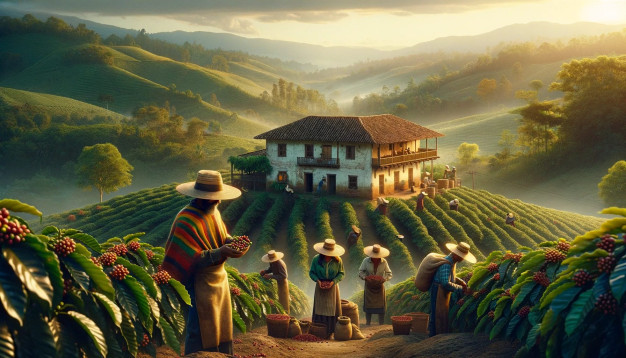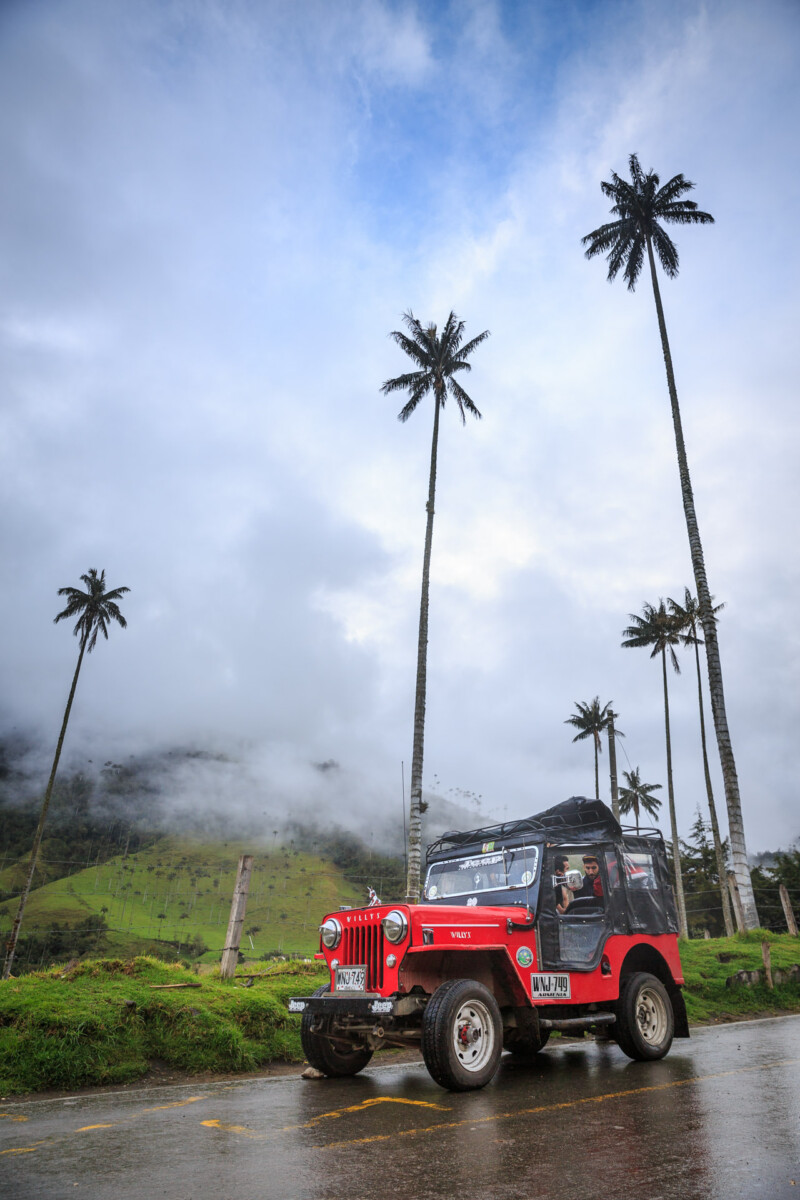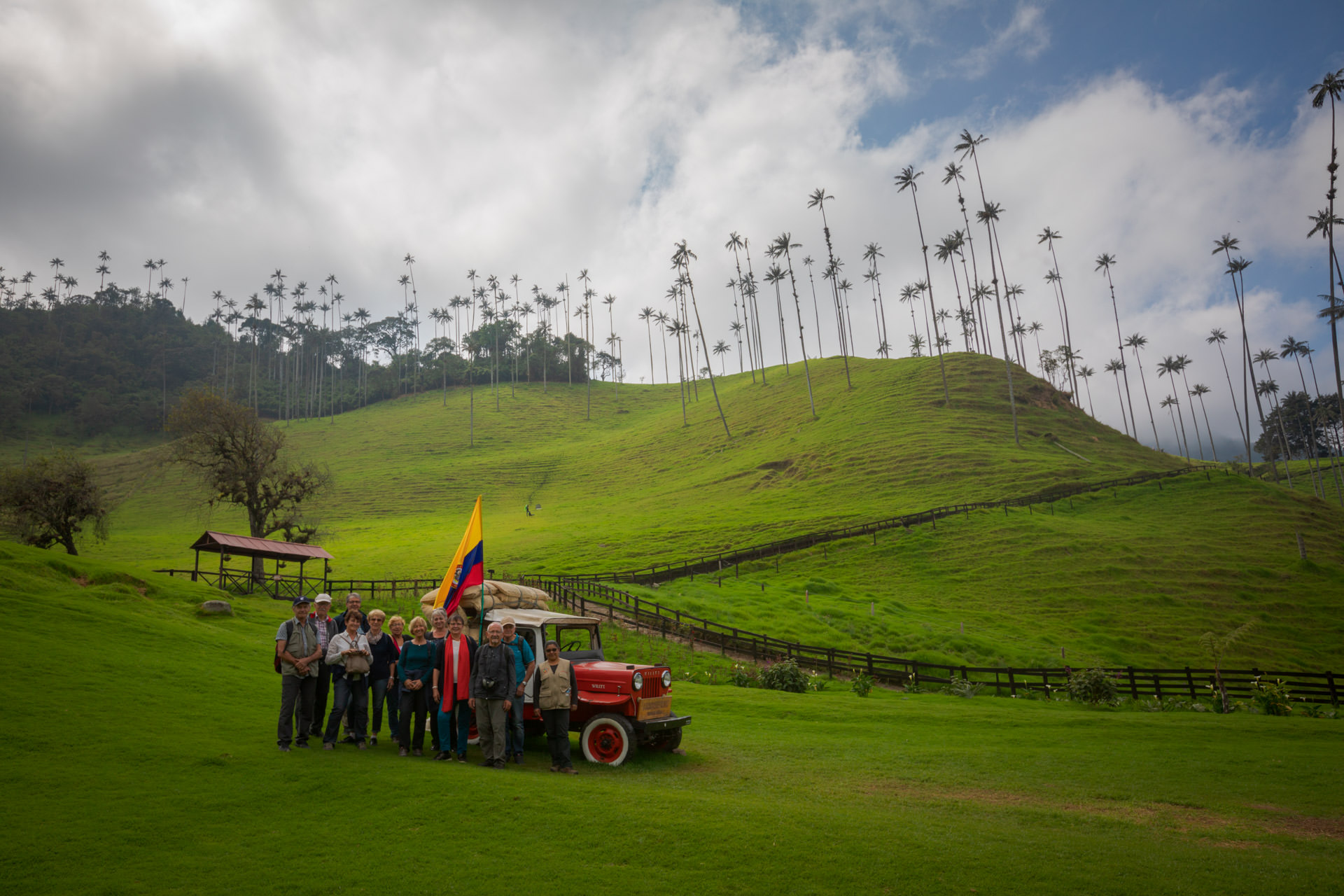Eje Cafetero Travel Guide
Eje Cafetero exploration: Access, attractions, stays, costs

The Eje Cafetero colombiano was one of the destinations that we had decided to visit from the first moment we decided to travel to Colombia.
In a way, the Eje Cafetero is like the representation of everything I had in my imagination about Colombia, except the cities.
It is a place that can be described roughly in three words, colorful, nature and coffee.
But it would be a little ungrateful of me to say only that about the Coffee Axis, the people there are nice, quiet, hospitable, with a smile on their mouths.
Come on, they make you feel at home, a real luxury.
Smells, sensations, colors, all the senses activated and enjoying every moment, that’s the Eje Cafetero, or at least that’s what the stay there meant to me.
Eje Cafetero Wiki
The Eje Cafetero is located in the Colombian department of Quindío.
This department is made up of the cities of Manizales, Pereira and Armenia.
That is, the triangle formed by them, contains all the wonders you can find there, from colorful and beautiful towns like Salento, wonders of nature like the Palmas de Cera, the Colombian national tree, and much more.
How many days to stay in the Eje Cafetero
I would say that you should reserve a few days to visit the different places that the Eje Cafetero offers, but this, as always, will depend on the days you have available, which unfortunately are usually less than we would like.
We spent three days and two nights, is that enough? Actually, yes and no.
Yes because it gave us time to visit everything we wanted, the minimum possible.
And no, because we left places in the inkwell, but as I said before, in the end the days we had to travel to Colombia were not all we would have liked, so we had to plan and decide.
We visited a coffee farm, enjoyed Salento and did the complete trekking through the Cocora Valley.
I would say that this is the least we could see in El Eje Cafetero, and from there, discover and enjoy other places.
Some of those other places we were looking at and found information about before our trip are the following;
- Filandia, a town as colorful as Salento, but with less tourism.
- Barbas Bremen Reserve, a nice trekking where you can see howler monkeys.
- National Natural Park Los Nevados, where you can see an active volcano, Nevado Ruiz, a glacier lagoon.
If you want to visit this park and don’t have your own vehicle, you will need to hire a tour.

Accommodation in Eje Cafetero
Accommodation in Salento
In Salento you will find a lot of accommodation for all tastes and pockets.
This is mainly due to the large number of visitors who come there.
In our case, we stay at the Hotel Salento Real, very close to Calle Real and also to Plaza Bolívar.
But, as Salento is a small town, everything will be close to you.
The Hotel Salento Real was a very nice place.
What we liked the most was the breakfast, because besides being quite tasty, it is served in a terrace with a view that accompanies quite a lot.
You can have a look at this hotel, to see prices, photos, opinions (beyond ours) and availability, check out this link, Hotel Salento Real.
If you want to see other accommodation options in Salento, you can check this link, Accommodation in Salento.
Accommodation in other places of the Eje Cafetero
As in our case we only stay in Salento, we cannot recommend other places, but we leave you with links so you can have a look at the different options you have in the rest of the places of the Eje Cafetero.
How to get around in the Eje Cafetero
Moving around the Eje Cafetero is really easy, since being such a visited place, it is perfectly prepared for you to go to any point of it using either buses or willys.
What are willys? Well, it’s an all-terrain car adapted to the new times, because its production was finished at the end of the 40’s.
They are a real relic, and the best way to reach places like the Cocora Valley from Salento.
From the main cities of the Eje Cafetero, Salento, Armenia or Manizales, from their bus terminals you can access the tourist spots.
And from towns like Salento or Filandia, you can take the willys from the main squares.
Rent a car in the Eje Cafetero? Well, it’s an option that we don’t take, but we know it exists.
Moreover, it can be interesting if you are several, to share expenses and get faster to the different points that may interest you in the Eje Cafetero.
Getting around in Eje Cafetero renting a car
If you want to take a road trip in Colombia and have the freedom to visit the area at your own pace, a good idea is to rent a car. Here you can compare the available offers and rent a car at the best price.

How to get to the Eje Cafetero
Being such a popular place, and one of the most visited in Colombia, it is not surprising that the possibilities to get there are many.
You can get there by plane or by bus, depending on where you come from and how much time you have, you can choose one of the two options.
By plane
If you decide to fly to the Eje Cafetero you can do so to the three main cities, Manizales, Pereira and Armenia.
However, you will have to take into account where you are going to stay.
There are flights from the main cities of Colombia, Bogotá, Medellín and Cartagena de Indias.
We stayed in Salento, and Pereira airport was the best option for flying from Bogotá, which was our place of origin before we set foot on the magnificent Eje Cafetero.
We can tell you how to get there in the best and cheapest way from Pereira, since that is our experience.
Well, once you have landed at Pereira airport and collected your luggage, take a taxi to the bus terminal and there you should go to the window of Expreso Alcalá and wait for the next bus to Salento (they also go to Filandia).
There are buses every few days, so you won’t have to wait long.
By bus
If you decide to go to the Eje Cafetero by bus, you can do it from Bogotá, Cali or Medellín.
From Bogotá (it takes eight hours) and from Cali (the trip takes four hours) there are buses that go to the city of Armenia, there you must take a bus, at the same bus station, to Salento, if this is your destination, with the company Cootracir.
Buses leave every twenty minutes.
If your point of origin to go to the Eje Cafetero is Medellín, there are buses that go directly to Salento, with a duration of about seven hours.
You must take the bus at the South Station in Medellín.
But if your destination is not Salento, there are also buses from Medellín that take you to Pereira, and from there, you will have to take another bus to your destination.
When to travel to the Eje Cafetero
I suppose that if you want to travel to the Eje Cafetero, one of the first questions you will be asking yourself is what is the best time of year to travel, what is the weather like, by day, by night, etc.
Well, we’ll tell you about that now.
The good thing about this region, and that’s why we get a coffee of supreme quality, is the climate, the temperature.
Well, the temperature remains stable throughout the year, between 18 and 21 degrees centigrade.
But not everything is the temperature, but there are also some months where the rain makes an appearance, and it can spoil your plans a little, especially if you are going to do some trekking, like the Cocora Valley.
There are also some months considered as high season, where there are always many people in the Eje Cafetero.
But there are other months where it doesn’t rain, the temperature is still the same, but there are not so many people.
The rainiest months are March, April, October and November.
The months considered as high season are December, January, May, June and July.
And the months where it doesn’t rain but the Eje Cafetero is not overcrowded are February, August or September.
We were in the month of September, and the truth is that it did not rain, the temperature was great, and although there was tourism, that was not massive.

What to see and do in the Eje Cafetero
Well, at this point, I understand that you’ll want to know what to see and do in the Eje Cafetero, although we’ve already given you a bit of an advance on the places to see, but with little detail.
Visiting a coffee farm
You can’t leave the Eje Cafetero without visiting a coffee farm, which is the essence of the place!
Well, there are several coffee farms you can visit near Salento, and reaching them is very easy.
You just have to go to the Park (which is the main square of Salento) and there buy the ticket of the willy and the coffee farm you are going to visit.
The Ocaso farm is the biggest in the area, and I think it’s called that because you can’t see the sun as big as it is (I don’t know if my inventiveness is correct :)).
This is also the farm that attracts more visitors.
And the smallest farm is the Don Elias Coffee Farm, and precisely for that reason, because it is the smallest and most familiar of all, it was the one we chose to visit.
We loved walking around the coffee plantations, seeing that brown gold, the wealth of Quindío, up close.
But also, we were lucky (I think it’s more about not overcrowding) to be able to learn the secrets of this small farm alone, together with Elias’ grandson.
We were able to see the complete process of production and elaboration of the arch-famous Colombian coffee.
And best of all, taste it.
I’m not a particularly coffee-drinking person, but I do like to enjoy a good coffee from time to time, and I don’t think I’ve ever had a coffee like this before.
You can also buy the coffee they produce on the farm, at really low prices.
Come on, it makes you want to bring bags and bags of coffee.
It’s delicious.

Trekking in the Cocora Valley
I think this was the part of the trip to the heart of the Coffee Axis that we liked the most, trekking through the Cocora Valley.
Before arriving I had seen dozens of photos of the wax palms, the Colombian national tree, but when we arrived, my mouth was open.
Much more impressive than the photos showed.
To do the trekking of the Cocora Valley I recommend you to get up early.
This way you will be able to enjoy a quieter and less crowded walk.

How to get to Cocora Valley
It’s pretty simple, you just head to the main square of Salento and take a Willy.
There are several willys you will see, and they don’t come out until they are full, but don’t worry, they fill up pretty fast.
You can buy your return ticket right there.
When you finish the trek, you must go to the parking lot where your willy left you.

The Mountain Farm
The Finca de la Montaña is the highest part of the trek, where there is a house and you can enjoy really nice views of the surroundings.
If you start the trekking as recommended, in La Finca de la Montaña you will have climbed to the highest part, and you will only have to go down.
If you do it the other way round as well, but the climb, as I told you before, is quite hard, there was nothing to see but the faces of those who decided to do it the other way round.

More info about trekking in Cocora Valley
We had read that there were two ways of doing the trekking.
Since it is circular, you can start on the recommended route, or do it the other way round.
The latter way is supposed to find less people on the way and leave the best for the end.
We start with the recommended route, where you suddenly find yourself with your wax palms.
Little by little you go up and you get into a foggy forest, beautiful.
To be honest, we saw, in fact, more people doing it in the opposite direction than recommended.
But then, doing it the other way around has a little drawback, and that is that the uphill climb is deadly.
Much better to lower it.
The distance covered if you do the complete trek is about twelve kilometers, to which you will have to add two more if you get to La Casa de los Colibries, which is worth it.
If we talk about the level of difficulty, I would say that it is between medium and low if you do it by the indicated way.
In case you start the trek upside down, the steep and long-lasting climb, I think it would be at medium-high level.
The House of Hummingbirds
One kilometer down from the Mountain Farm there is a fork that tells you if you want to go to the Casa de los Colibríes (Hummingbird House) or continue towards the bridges of the Quindío River until the exit.
We decided to do the view of the hummingbirds, since we had already reached there, we thought that walking a couple more kilometers might be worthwhile.
And so it was.
It’s called the Hummingbird House since there are dozens of hummingbirds flying around.
But it’s also true that both tourists and arriving tourists are making the hummingbirds go from there to less crowded and less noisy places because of the noise.
So, try to be quiet and enjoy their presence.

Bridges over the Quindío River
The Quindío River crosses this area, and in order to carry out the trekking, you will have to pass over the seven rudimentary bridges.
The landscape is really beautiful, the cloud forest and the bridges make a perfect combination

Enjoy Salento
During our trip to the Eje Cafetero, Salento was our “center of operations”, and from there we went to visit the Cocora Valley and the Coffee Farm.
But Salento is a town you have to visit yes or no.
Well, from what I’ve read Filandia is very similar, so if you go to Filandia and you don’t have enough time to visit Salento, you can get an idea.
It’s not that Salento has dozens of things to see, it’s more about enjoying the place, strolling through its colorful streets, the tranquility and above all tasting the typical gastronomy of the area.
And one thing I tell you, Salento is considered the most beautiful town in Colombia, there is nothing there.
Even though it is an inland town, you will be surprised to see that one of the most typical foods is trout, there are several fish farms around.
And you’ll see that patacones are like sheets of large, thin but delicious.
Go up to the viewpoint of Salento to see how far the limits of this town go, you will get a nice view in your retina and in your camera.

Safety and advice for the Eje Cafetero
The Eje Cafetero in Colombia is a quiet and safe place, but like everywhere else, just take the basic precautions.
In towns like Salento, they are used to tourism and in fact, it’s an important source of income, so you can relax and enjoy the town.
In cities like Armenia, Manizales or Pereira, I don’t think you’ll spend much time, but they might be the places with some risk.
In any case, if you are going to spend a night in any of these three cities, ask in your accommodation if there is any area where it is not advisable to walk, or if there is any time, such as at sunset or dusk where there is some risk.
Colombia’s tourist areas are safe, despite the country’s bad reputation for its recent past.
Anyway, as I mentioned a little above, if you have any doubts, it is better to ask at your accommodation, as they know better than anyone whether there is a risk or not.
Cocora Valley is a very quiet place, you don’t have to worry.
But keep in mind some tips.
- Wear suitable shoes to do a trekking.
- Put on some clothes that will keep you from a shower of water.
- Just in case, take something for lunch and water, but remember, don’t throw any wrappings on the ground.
What to pack for the Eje Cafetero ?
- Don’t forget sunscreen, because when the sun comes up, it hits hard.
- Mosquitoes will be around to suck some of your blood, so bring some repellent.
- In case it rains, it’s also good to carry some kind of waterproof bag for your mobile or camera.